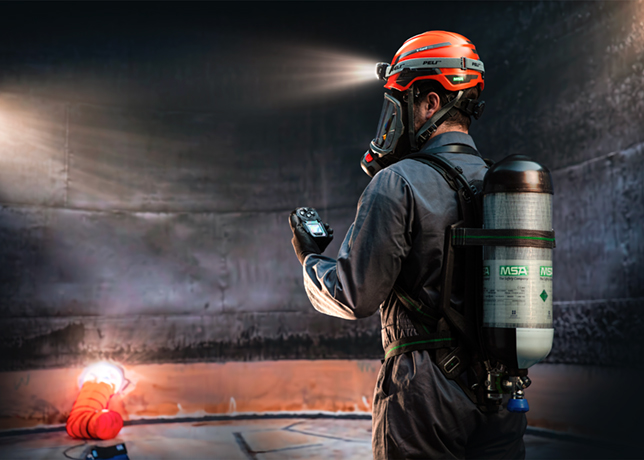
 MSA Safety’s V-Form, V-Gard H1, ALTAIR io® 4 Connected Gas Detector
MSA Safety’s V-Form, V-Gard H1, ALTAIR io® 4 Connected Gas Detector
Connected gas detection systems protect Saudi Arabia’s workforce, align with Vision 2030’s tech-driven goals, and boost operational resilience in the Kingdom’s evolving energy sector
In today’s evolving energy landscape, data has become the thread that connects efficiency, innovation, and safety.
From predictive maintenance in refineries to AI-driven reservoir modelling, oil and gas operations are undergoing a digital transformation, and safety, particularly around high-risk hazards like hydrogen sulphide (H2S), is advancing in step.
For large-scale operators, where operational complexity meets ambitious safety goals, rethinking how H2S exposure is managed is more than a technical challenge, it’s a strategic imperative.
H2S remains one of the industry’s most critical hazards, demanding robust controls such as portable and fixed gas detection, clear alarm-response protocols, confined-space permits, and comprehensive training for all personnel and contractors.
The oil and gas sector has been shaped by lessons from previous H2S-related incidents.
These experiences have driven greater emphasis on early detection, effective PPE use, and swift evacuation procedures, now cornerstones of safety standards and workforce training.
MOVING FROM DETECTION TO PREVENTION
Traditional gas detection systems have often been reactive, with fixed sensors and portable devices working in isolation.
In decentralised or remote operations, this can create visibility gaps and delay emergency responses, a dangerous prospect when dealing with a toxic gas like H2S.
The next step is connected detection ecosystems: integrated networks of wearable devices, real-time monitoring platforms, and cloud-based analytics.
By bringing these elements together, organisations can track H2S exposure across teams and locations, detect anomalies early, and generate actionable insights for continuous safety improvement.
When these insights are delivered to the right people at the right time, they empower confident, timely decision-making across every level of operations.
EMPOWERING A SAFER, MORE AGILE WORKFORCE
 |
MSA Safety’s ALTAIR io® 4 Connected Gas Detector, M1 SCBA, V-Gard H1 |
One of the cornerstones of Saudi Arabia’s Vision 2030 is the development of a highly skilled, technology-enabled workforce.
Connected safety systems align with this goal by giving frontline workers intuitive tools that fit naturally into their tasks, while providing safety leaders with trend data to identify training needs, refine maintenance schedules, and optimise resource allocation.
This approach represents a cultural shift toward proactive, "smart" risk management, addressing hazards before they escalate.
In the case of H2S, where even short-term exposure can be dangerous to workers, prevention is the most effective safeguard.
A VISION-ALIGNED FUTURE FOR INDUSTRIAL SAFETY
The Kingdom’s drive to become a global hub for energy and industrial innovation is raising the bar for safety performance.
Intelligent detection and prevention systems can help operators not only meet compliance requirements but also set new benchmarks in safety leadership.
Smart H2S detection is a clear example of how technology and safety are converging, protecting lives, reducing risk, and strengthening operational resilience.
As the sector embraces this new era of data-driven energy, the challenge is not whether to transform risk management, but how quickly to scale the technologies that make it possible.
MSA’s Gas Detection Hub offers insights into implementing connected H2S detection systems that protect your workforce, meet evolving safety expectations, and drive long-term operational excellence.































-is-one-of-the-world.jpg)






-(4)-caption-in-text.jpg)



















































